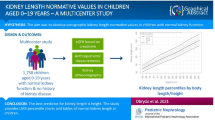Abstract
The present clinical use of serum osmometry is erroneous in two respects. The first, and the most important, is the incorrect assumption that serum behaves as a dilute ‘ideal’ solution and that the osmotic activity of a substance depends solely on the number of solute particles. The amount of variance from ideal behaviour of serum containing an exogenous substance is expressed by the osmotic coefficient (ϕ). We have calculated the osmotic coefficient for serum containing ethanol (alcohol) and recommend that the osmotic coefficient for serum containing other low molecular weight substances such as methanol (methyl alcohol), isopropyl alcohol and ethylene glycol also be calculated. This is necessary for the accurate calculation of the contribution of these substances to the serum osmolality.
Secondly, the practice of subtracting the calculated serum molarity from measured serum osmolality is not valid since it represents a mathematically improper expression. The units of these two terms are different. The ‘osmole gap’ (OG) is typically viewed as the difference between serum osmolality determined by an osmometer and the estimated total molarity of solute in serum by directly measuring the concentration of several substances and then substituting them into a published formula. Some authors call this sum the calculated or estimated osmolarity but, because the concentrations are measured directly and not with an osmometer, the calculated term represents molarity. The units of osmolality are mmol/kg of H2O and the units of molarity are mmol/L. Therefore, the practice of subtracting calculated serum molarity from measured serum osmolality is not mathematically sound and is an oversimplification for ease of application. This mathematical transgression necessarily adds an error to the incorrectly calculated OG. Despite this, the OG is commonly used in clinical medicine. Serum osmolality can be converted to molarity provided the weight percentage and the density of the solution are known and thus, we recommend that this conversion be done prior to calculation of the gap. We recommend that the gap between measured serum osmolarity and calculated serum molarity be called the ‘osmolar gap’.
After having corrected for non-ideality for serum and for inconsistency of units, the standard value and reference range for this gap must be determined in an adequate number of patient populations and in a variety of clinical settings. An example of this determination, using data from a group of ethanol-poisoned patients is given. This correction should be applied before the evaluation of the osmolar gap as a screening test for other low molecular weight substances proceeds.








Similar content being viewed by others
References
Purssell RA, Lynd LD, Koga Y. The use of the osmole gap as a screening test for the presence of exogenous substances. Toxicol Rev 2004; 23(3): 189–202
Heusel JW, Sigguard-Andersen D, Scott MG. Physiology and disorders of water, electrolyte and acid base metabolism. In: Burtis CA, Ashwood ER, editors. Tietz textbook of clinical chemistry. 3rd ed. Philadelphia (PA): WB Saunders, 1999: 1097–8
Lehman HP, Henry JB. Appendix 5-SI units. In: Henry JB, editor. Clinical diagnosis and management by laboratory methods. 20th ed. Philadelphia (PA): WB Saunders, 2001: 1426–41
Atkins P, de Paula J. Physical chemistry. 7th ed. New York: Freeman, 2002
Smithline N, Gardner Jr KD. Gaps: anionic and osmolal. JAMA 1976; 236(14): 1594–7
Prigogine I, Defay R, editors. Everett DH. Chem Thermodyn, London: Longmans, 1954: 333
Matsuo H, To ECH, Wong DCY, et al. Excess partial molar enthalpy of 1-propanol in l-propanol-NaCl-H2O at 25°C. J Phys Chem B 1999; 103: 2981–3
To ECH, Hu J, Haynes CA, et al. Interactions in l-propanol-urea-H2O. J Phys Chem B 1998; 102: 10958–65
Koga Y. Vapour pressures of dilute aqueous t-butanol: how dilute is the Henry’s law region? J Phys Chem 1995; 99: 6231–6233, 12370
Westh P, Haynes CA, Koga Y. How dilute is the Henry’s law region? II. J Phys Chem B 1998; 102: 4982–7
Johnson RB, Hoch H. Osmolality of serum and urine. In: Meites S, editor. Standard methods of clinical chemistry. New York, Academic Press 1965; 5: 159–68
Purssell RA, Pudek M, Brubacher J, et al. Derivation and validation of a formula to calculate the contribution of ethanol to the osmolal gap. Ann Emerg Med 2001; 38: 653–9
Bossuyt PM, Reitsma JB, Brans DE, et al. The STARD statement for reporting studies of diagnostic accuracy: explanation and elaboration. Ann Intern Med 2003; 138: 1–12
Acknowledgements
None of the authors received any funding to assist in the preparation of the manuscript. None of the authors have any potential conflicts of interest.
Author information
Authors and Affiliations
Corresponding author
Rights and permissions
About this article
Cite this article
Koga, Y., Purssell, R.A. & Lynd, L.D. The Irrationality of the Present Use of the Osmole Gap. Toxicol Rev 23, 203–211 (2004). https://doi.org/10.2165/00139709-200423030-00006
Published:
Issue Date:
DOI: https://doi.org/10.2165/00139709-200423030-00006




